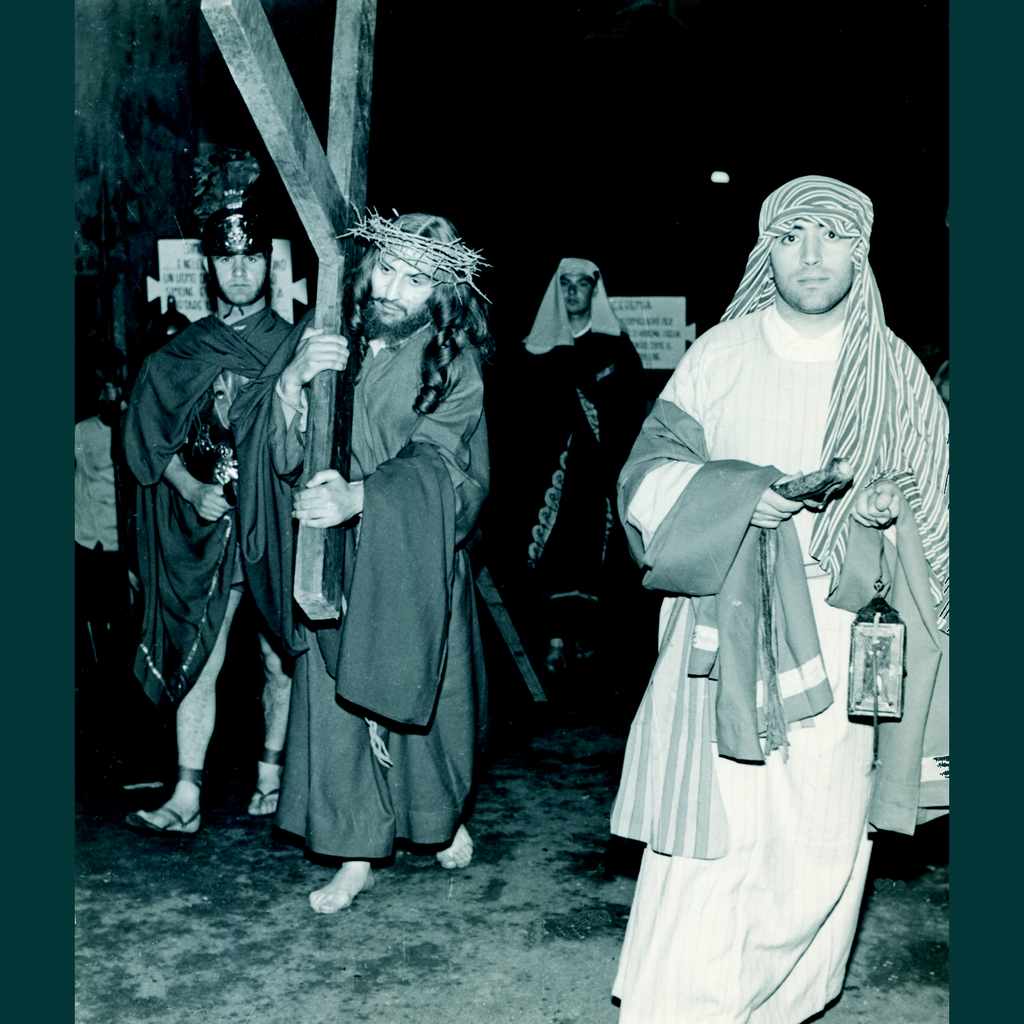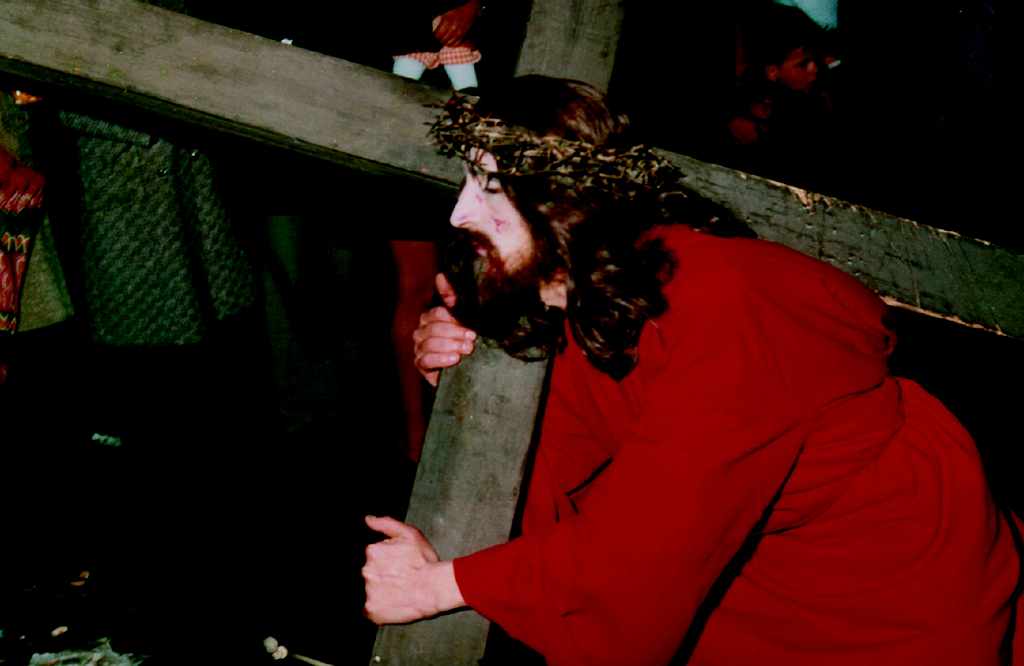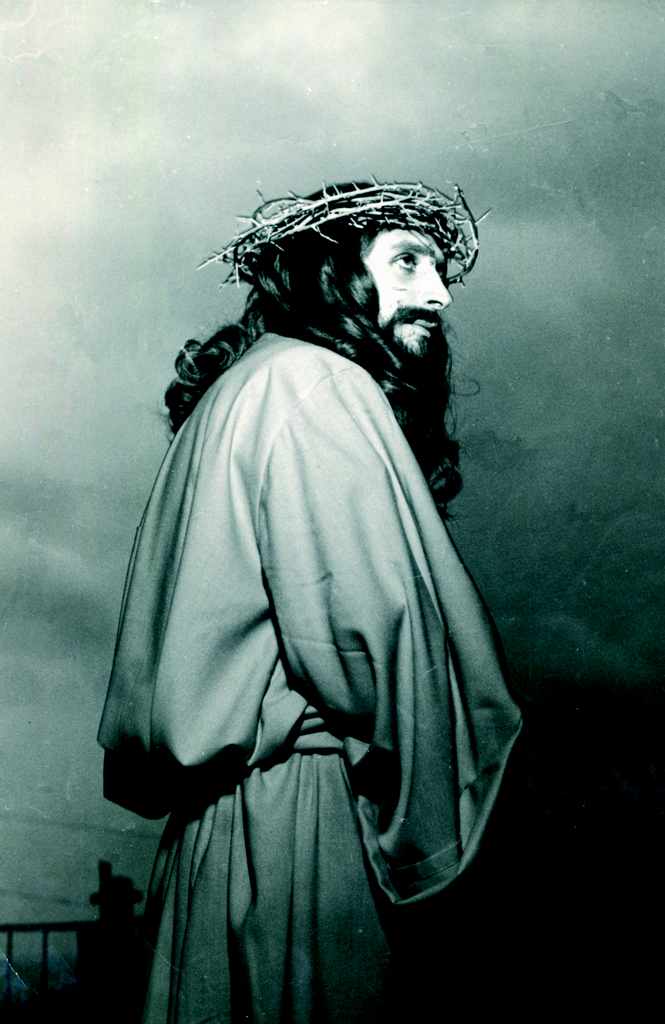In the ancient town of Alatri, on Good Friday evening, a reenactment of Jesus’ last days has been held since 1835. Staged by hundred of participants, it originates from medieval representations inspired by the Old and New Testament.

Good Friday in Alatri – www.venerdisantoalatri.it
The event describes the world’s salvation in three crucial days, Palm Sunday, Good Thursday and Good Friday. The highlights of the re-enactment are the Crucifixion and the Miserere, sung in the streets in the evenings before Good Friday.
On Palm Sunday at late afternoon, choirs gather in the Square, a preparatory rite for the Good Friday procession. On Palm Sunday evening, two local young people, one carrying a crucifix wrapped in a white cloth and the other a basket for the offerings, go from house to house and uncover the crucifix, singing an ancient chant about the Passion of Christ, which differs from one district to another. In the evening of Holy Thursday, the Last Supper is staged four times, at intervals of one hour and a half, ending at midnight.

Jesus carrying the Cross on Good Friday in Alatri – www.venerdisantoalatri.it
On Good Friday evening, Jesus’ Trial, the Drama of Golgotha and The Crucifixion are performed and, on Good Friday night, a procession starts, which has been represented since the 1700s. During the procession, the Psalm “Miserere Mei, deus”, of Byzantine origins, is sung by the participants from the different districts. To the “Confraternita della Passione di Nostro Signore Gesù Cristo”, who has been taking care of this religious event from the start, a committee has joined in 1950, who curates the historical and traditional aspects. The sacred representation is performed by local actors in typical costumes of the time.

Good Friday in Alatri – www.venerdisantoalatri.it
The “History of Salvation” opens with a quadriga driven by a Roman centurion, accompanied by a slow, glooming choir and drums, and followed by knights, Roman soldiers, Jews and banners explaining the story of the Passion of Christ. The parade proceeds with all the religious characters, starting with Adam and Eve, Cain and Abel, Abraham and Isaac, and then continuing with Saint Joseph, Moses and the Promised Land, King David, the prophets Jeremiah and Isaiah, as well as Saint John the Baptist and Herod. Follow Pontius Pilate, Barabbas, Veronica and the cloth with Jesus’ face, and the two thieves. Finally, Jesus appears, with its cross and crown of thorns, followed by his mother Mary, the apostles and disciples, and Saint Peter with the keys to the Kingdom. After the historical reenactment, the procession starts; it includes the priests, the religious brothers with their faces covered, and the girls dressed in white carrying the simulacra of the Dead Christ. People with lit candles follows the parade, some of them are barefoot and some dressed in mourning, in order to ask for a grace.
